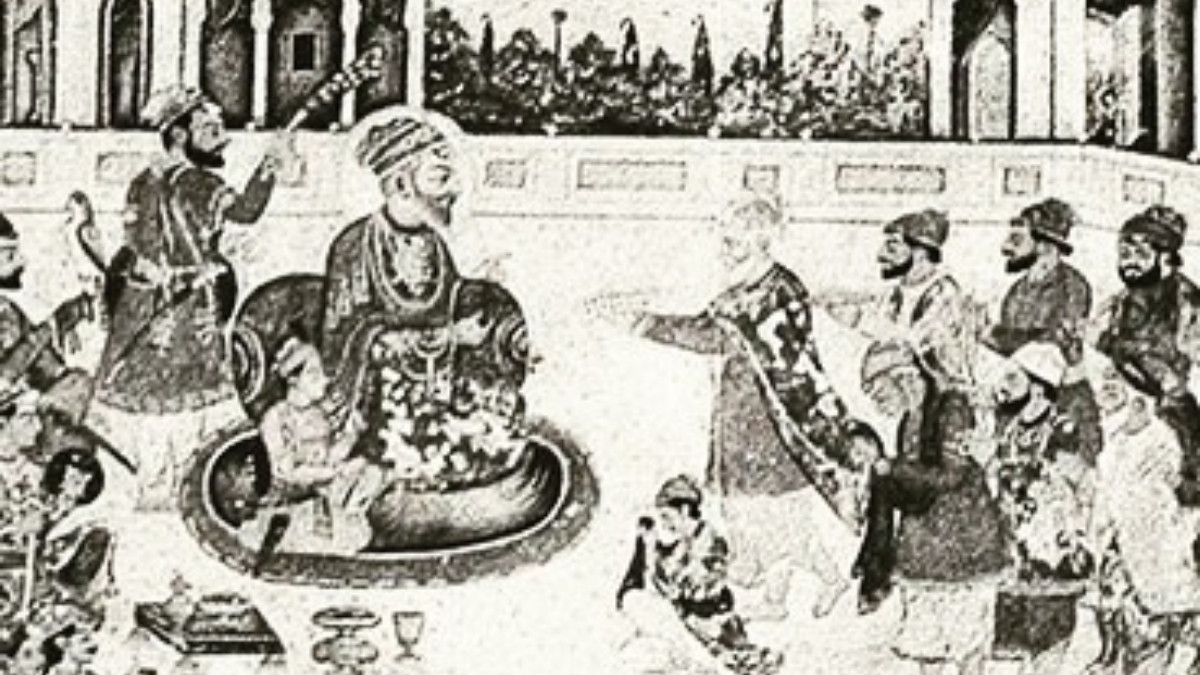Key Points
- Born April 1, 1621, Guru Tegh Bahadur was the ninth Sikh Guru.
- Guru Tegh Bahadur's term ran from 1664-1675, marked by travels and Mughal friction.
- Executed Nov 11, 1675, his martyrdom led to the Khalsa and solidified Sikh identity.
Guru Tegh Bahadur (born April 1, 1621, Amritsar, Punjab, India, died November 11, 1675, Delhi) was the ninth of the ten Gurus of the Sikh religion. He was the youngest son of the sixth Guru, Guru Hargobind. His term as Guru ran from 1664 to 1675, a period characterised by his extensive travels across the Indian subcontinent and increasing friction with the Mughal administration.
According to reports, his pontificate occurred during the reign of Emperor Aurangzeb, a period marked by religious orthodoxy. It is also recorded that his execution solidified the Sikh identity and led directly to the founding of the Khalsa by his son and successor, Guru Gobind Singh. His writings, which reflect on the nature of God and human attachment, are incorporated into the Sikh holy scripture, the Guru Granth Sahib.
| Feature | Historical Facts about Guru Tegh Bahadur |
| Birth Name | Tyag Mal |
| Birth Date | April 1, 1621 |
| Parents | Guru Hargobind and Mata Nanaki |
| Spouse | Mata Gujri |
| Accession to Guruship | 1664 (Following Guru Har Krishan) |
| Successor | Guru Gobind Singh |
| Execution Date | November 11, 1675 (Julian Calendar) / November 24 (Gregorian) |
| Location of Death | Chandni Chowk, Delhi |
| Memorial Site | Gurdwara Sis Ganj Sahib |
Early Life and Accession of Guru Tegh Bahadur
Born Tyag Mal, he was trained in the martial arts of swordsmanship and archery, as well as horsemanship, by his father, Guru Hargobind. He fought in the Battle of Kartarpur in the 1630s against Mughal forces. Following this battle, his father bestowed upon him the title Tegh Bahadur ("Mighty of the Sword") in recognition of his military prowess.
Despite his martial training, Tegh Bahadur spent much of his early adulthood in meditation in the village of Bakala. He assumed the Guruship in 1664 after the death of the eighth Guru, Guru Har Krishan, who reportedly uttered the words "Baba Bakala" on his deathbed, indicating his successor would be found there.
History of Guru Tegh Bahadur Ministry and Travels
During his Guruship, Guru Tegh Bahadur travelled extensively to spread Sikh teachings. He travelled through the Malwa and Majha areas of Punjab, then on to Dhaka and Assam in the east.
Founding of Settlements: He founded the city of Chakk Nanaki in the foothills of the Himalayas in 1665, which later became known as Anandpur Sahib.
Literary Contributions: As noted by historical accounts, he was a prolific poet. 115 (or 116 according to some sources) of his hymns are preserved in the Adi Granth (Guru Granth Sahib). His works often focus on the transient nature of life and spiritual devotion.

Mural of Guru Tegh Bahadur with young Guru Govind Singh from Gurdwara Baba Atal Rai, Credit - Wikipedia
Also Read about - Tutankhamun Biography: Mummy, Tomb, Mask, Facts and More
Guru Tegh Bahadur’s Martyrdom and Legacy
In November 1675, Guru Tegh Bahadur was brought before the Mughal court. Accounts state that he was asked to perform a miracle to prove his proximity to God or to convert to Islam. He refused both requests.
The execution of Guru Tegh Bahadur marked a significant turning point in the history of Sikhism. It ended a period of relative pacifism and precipitated the militarisation of the Sikh community. His death inspired his son, Guru Gobind Singh, to organise the Sikhs into the Khalsa, a martial order distinct in appearance and purpose, forever altering the sociopolitical structure of the region.
Comments
All Comments (0)
Join the conversation